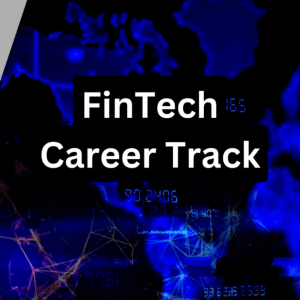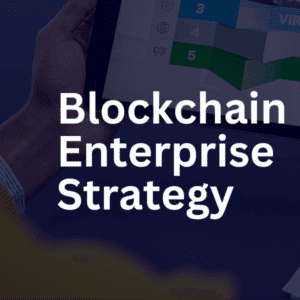Description
Unlock Blockchain’s Potential in Banking: From Cryptocurrencies to Central Bank Digital Currencies and Beyond.
Understanding blockchain and cryptocurrencies is paramount to understanding and regulating this growing technology. In this course, participants will be introduced to topics and use cases as they relate to both the technology and potential deployment by the government sector. Participants do not need to follow the sequence of the course, you are free to jump to modules that are of interest to you and then return to modules when the need arises and your time allows.
Key Takeaways:
- Having a basic understanding of Blockchain
- Learning about Cryptocurrencies
- Understanding the types of Stablecoins in the Digital Currency space
- Learning about Central Bank Digital Currencies
- Exposure to a number of actual Government use cases
This course is a component of the comprehensive FinTech Career Track toward the Web3 Certification Board exam towards achieving the FinTech+ Certification.
Learning Outcomes
By the end of this course, you will be able to:
Understand Blockchain Fundamentals: Participants will gain a foundational understanding of blockchain technology, its properties, transactions, consensus mechanisms, and smart contracts.
Compare Traditional Finance (TradeFi) and Decentralized Finance (DeFi): Participants will be able to differentiate between TradeFi and DeFi systems, exploring the advantages and challenges of decentralized finance.
Comprehend the Role and Use of Cryptocurrencies: Participants will understand how cryptocurrencies are created and function, including the role of ICOs, STOs, IEOs, IDOs, and the significance of airdrops.
Evaluate Stablecoins and Their Risks: Participants will learn about different types of stablecoins, their creation, and the risks associated with them, such as the Luna crash, to better assess their value in financial systems.
Analyze Central Bank Digital Currencies (CBDCs): Participants will explore CBDCs, including their motivations, types, global experiments, and the potential regulatory and operational concerns associated with them.
Identify Blockchain Use Cases in Banking: Participants will examine practical blockchain applications in the banking sector, such as cross-border payments, trade finance, KYC, and fraud detection, to understand the transformative potential of blockchain.
Navigate the Regulatory Landscape of Blockchain: Participants will assess the current regulatory environment for blockchain both in the US and globally, understanding the challenges, energy consumption concerns, and future outlook for regulatory policies.
Prerequisites
There are no formal prerequisites for the Blockchain Essentials for Bankers course. It is designed for participants with little to no prior knowledge of blockchain technology, making it accessible to individuals from various professional backgrounds, including those new to the subject matter. However, a basic understanding of banking and finance may enhance the learning experience.
Who Should Enroll
This course is ideal for:
Bankers and Financial Professionals: Individuals working in the banking sector who want to gain a foundational understanding of blockchain technology, cryptocurrencies, and decentralized finance.
Compliance Officers and Regulators: Professionals responsible for ensuring compliance with evolving blockchain regulations and digital asset policies.
Government Officials: Those involved in policymaking or overseeing financial technology and digital currency adoption.
Investors and Analysts: Individuals interested in understanding the potential impact of blockchain and digital currencies on financial markets.
IT and Technology Professionals: Tech specialists working in banking or financial services who need a basic understanding of blockchain’s technical framework and its applications in banking.
Business Strategists: Leaders and executives looking to leverage blockchain for banking innovations and efficiencies.
Anyone Curious About Blockchain Solutions in Banking: Those interested in how blockchain technology can be applied in the banking and financial services industries.
Course Outline
Module 1: Blockchain and Digital Ledger Technology Essentials
- Brief History of Blockchain
- Blockchain Properties
- Types of Blockchain
- Blockchain Transactions
- Consensus
- Blockchain Mining
- Smart Contracts
- Pillars of Blockchain Technology
Module 2: What is DeFi
- What is Traditional Finance (TradeFi)
- What is DeFi
- DeFi vs TradeFi
Module 3: NFTs
- What are NFT’s?
- How are they created?
- What is the value of NFTs?
- Are NFTs only for Art?
Module 4: Crypto Currencies
- What are they?
- How are they created?
- ICOs
- STOs
- IEOs
- IDOs
- What is an Airdrop?
Module 5: Stablecoins
- What is a Stablecoin
- Who Create them?
- Types of Stablecoins
- Fiat-collateralized Stablecoins ·
- Commodity-backed Stablecoins ·
- Crypto-backed Stablecoins ·
- Algorithmic Stablecoins.
- Risks of Stablecoins
- The Luna crash
- Value of Stablecoins
Module 6: Central Bank Digital Currencies – CBDC
- What is a CBDC
- What is Fiat
- Types of CBDCs
- Concerns about CBDCs
- Who are Experimenting with Cryptocurrencies
- Motivations for CBDCs
- The US and CBDC
Module 7: Tokenomics
- What is Tokenomics
- Crypto Tokenomics
- Tokenomic Ecosystems
Module 8: Banking Use Cases
- What makes a good Use Case
- Cross-border Payments
- Trade Finance
- KYC
- Syndicated Loans
- Clearing and Settlement
- Compliance
- Identity Management
- Payment Processing
- Trade Finance Fraud Detection
- Capital Markets Trading
Module 9: Regulatory Environment
- Current Regulatory Environment
- Blockchain Regulation in the US
- Global Challenges to Blockchain Regulation
- Energy Consumption of Bitcoin and Crypto Assets
- Industry Reply
- Regulatory Outlook






